Are you tired of dealing with painful razor bumps every time you shave? Do you find yourself in need of a doctor's note to explain these frustrating skin irritations, especially when they impact your professional appearance? Look no further than Razor Bumps Inc, your premier destination for addressing the woes of razor bumps and ensuring a smooth, bump-free shave.
At Razor Bumps Inc, we understand the struggles faced by men who need to maintain a clean-shaven look for work, yet constantly battle with the aftermath of shaving. Whether you're in a corporate setting, serving in the military, or working in any profession that requires a polished appearance, razor bumps can be more than just a nuisance – they can affect your confidence and professional image.
That's why we've tailored our services to cater specifically to individuals like you, providing a convenient solution to the problem of razor bumps. Here's how Razor Bumps Inc can help you reclaim your smooth, clear skin and regain your confidence:
Say goodbye to the frustration and embarrassment of razor bumps – and hello to a smoother, more confident you – with Razor Bumps Inc. Join the thousands of satisfied customers who have entrusted us with their skincare needs and experience the difference for yourself. With our expert guidance, personalized solutions, and commitment to your satisfaction, achieving a bump-free shave has never been easier or more accessible.
Don't let razor bumps hold you back any longer. Visit Razor Bumps Inc today and take the first step towards smoother, clearer skin and newfound confidence in your appearance. Your smooth shave awaits!
Irregular sleep schedules can have significant impacts on employees, affecting various aspects of their physical health, mental well-being, and overall job performance. Here are some keyways in which irregular sleep patterns can influence employees:

Irregular sleep schedules often lead to insufficient and disrupted sleep, resulting in fatigue and decreased alertness during working hours. Employees may struggle to stay focused, make decisions, or remain engaged in their tasks.
Sleep plays a crucial role in cognitive functions such as memory, attention, and problem-solving. Irregular sleep patterns can impair these functions, leading to decreased productivity and efficiency in the workplace.
Lack of consistent and quality sleep can contribute to mood disturbances, including irritability, anxiety, and depression. Employees may find it challenging to manage stress, interact positively with
colleagues, and maintain a positive attitude at work.
Irregular sleep patterns have been linked to various health issues, including cardiovascular problems, obesity, and weakened immune function. Employees with irregular sleep schedules may be at a higher
risk of developing these health issues over time.
Sleep disruptions can lead to irritability and mood swings, which may strain interpersonal relationships at work. Effective communication and collaboration may be compromised, impacting teamwork and the overall workplace atmosphere.
Employees with irregular sleep schedules may experience reduced job satisfaction due to the negative effects on their well-being and performance. This dissatisfaction can lead to decreased motivation and
engagement in their work.
Employees with irregular sleep patterns may be more prone to absenteeism due to health issues or the need to recover from fatigue. This can result in higher rates of absenteeism, affecting team dynamics
and overall productivity.
Jobs that require high levels of concentration and alertness, such as those in healthcare, transportation, or manufacturing, may pose safety concerns when employees experience irregular sleep patterns.
Increased risk of accidents or errors can be a serious consequence.
For employees working non-traditional shifts, such as night shifts or rotating shifts, maintaining a consistent sleep schedule can be particularly challenging. This can exacerbate the negative effects on
health and well-being.
Chronic irregular sleep patterns may contribute to long-term health consequences, including an increased risk of chronic conditions such as diabetes, heart disease, and certain mental health disorders.
To mitigate these impacts, employers can consider implementing policies that promote a healthy work-life balance, provide resources for stress management, and offer flexibility in work schedules where possible. Additionally, promoting awareness and education about the importance of sleep hygiene can help employees make informed decisions about their sleep habits.
My team at and Razor Bumps Inc. are ready to help you and your employees.
Schedule your appointment now!
Razor bumps, medically known as pseudofolliculitis barbae, are common. The condition is caused by shaving, which causes curly hair to grow back into the skin. Razor bumps most often affect men and women with coarse or curly hair.
While You can treat the bumps with prescription medications, there are also a few over-the-counter (OTC) remedies that can be effective. Here we will tell you about the five best OTC remedies for razor bumps and why they work.
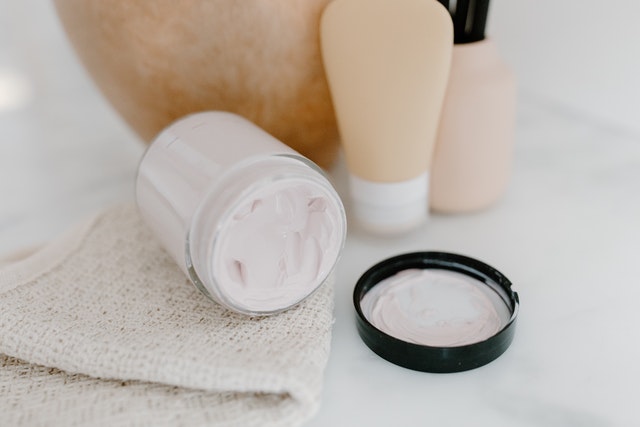
Since ancient times, Aloe Vera has been used for various skin conditions because of its numerous benefits. Aloe vera gel is naturally:
One of the best treatments for razor bumps at home is pure aloe vera gel or products made with natural aloe vera. These products can help reduce the appearance of razor bumps and provide instant relief.
Witch hazel is an all-natural astringent and antiseptic made from the bark and leaves of the Hamamelis virginiana plant. Native Americans used witch hazel medicinally for ailments, including colds, infections, and liver conditions. Today, you can see benefits for yourself by using witch hazel on various skin conditions, including razor bumps.
Razor bumps are caused when hair grows back into the skin after being shaved. That creates inflammation, redness, and itching in the epidermis. Witch hazel soothes and calms the skin. Meanwhile, its anti-inflammatory properties reduce redness and swelling from razor bumps.
Witch hazel products are great to always have on hand if you frequently experience mild to moderate razor bumps. For more serious cases of razor bumps, you might need to check with a physician before applying any topical treatment.
Tea tree oil is a natural remedy that you can use to treat razor bumps at home. With razor bumps, the hair follicles become irritated. Tea tree oil has antiseptic and anti-inflammatory properties that can calm folliculitis symptoms.
There is another reason to consider tea tree oil or products containing tea tree oil after shaving. Razors often cause tiny nicks and cuts on the skin. Tea tree oil may help prevent infection because it is believed to be antibacterial.
You can buy tea tree oil at most drugstores or online. Apply a few drops of oil directly to the affected area, and massage it gently. Do this two or three times a day until the razor bumps have disappeared. If you are using tea tree oil for the first time, start by applying a small amount to a test area to check for sensitivity. You can also add tea tree oil to a bath or shower.
Salicylic acid is a beta-hydroxy acid that works by breaking down the cells in the outer layer of the skin. It leads to the shedding of dead skin cells and helps unclog pores.
Salicylic acid is a topical medicine used to treat acne, psoriasis, calluses, corns, warts, and other skin conditions. Salicylic acid is available OTC without a prescription in up to 2% concentrations.
Benzoyl peroxide is an active ingredient found in many OTC acne medications. It is also the key ingredient in many razor bump treatments. It also breaks down keratin cells in the outer skin layers, causing dead skin to peel off. That opens and exposes ingrown hair cysts, which helps dry and heal them.
Benzoyl peroxide helps unblock pores, which can help prevent and treat razor bumps.
There are many benzoyl peroxide-based treatments available for razor bumps. Some are available as creams, gels, or washes. Others are available as ointments or lotions. Choose the one that works best for you.
Although razor bumps are a common problem for men and women who shave, you don’t have to live with them. For a mild case, try an over-the-counter treatment for razor bumps to reduce itching and minimize redness.
If you try these OTC treatments but don’t see improvement, talk with one of our expert doctors. Razor Bumps, Inc. offers video consultations with expert doctors to treat razor bumps. We will help you get rid of those pesky razor bumps for good!
We know that razor bumps can be embarrassing and frustrating. Let us help you get rid of them for good. We offer a video consultation with a doctor who can help you get your confidence back.
Contact us now for your low-cost appointment that your insurance may cover!
Disclaimer: The contents of this article are for informational purposes only and do not constitute medical advice. The information, graphics, and images on this site are not intended to substitute diagnosis or treatment by a medical professional. Always seek the advice of a licensed physician for any questions you may have regarding a specific condition.
“Aloe Vera”. bcm.edu. Accessed June 3, 2022.
“Benzoyl Peroxide”. ncbi.nlm.nih.gov. Accessed June 3, 2022.
“Salicylic Acid”. medlineplus.gov. Accessed June 3, 2022.
“Tea Tree Oil”. mayoclinic.org. Accessed June 3, 2022.
“Witch Hazel”. drugs.com. Accessed June 3, 2022.
You think you’ve just finished shaving your pubic area, but you notice something. It’s red, itchy, and painful. You have a razor bump in your pubic area.
Razor bumps are common for many people who shave the sensitive skin of their genitals, so if you’re dealing with them, don’t beat yourself up about it. If you get a case of razor bumps around the pubic area, you can treat it right away and take steps to prevent future razor bumps.
Here’s how to treat razor bumps in the pubic area once they pop up (and how to prevent them in the first place).
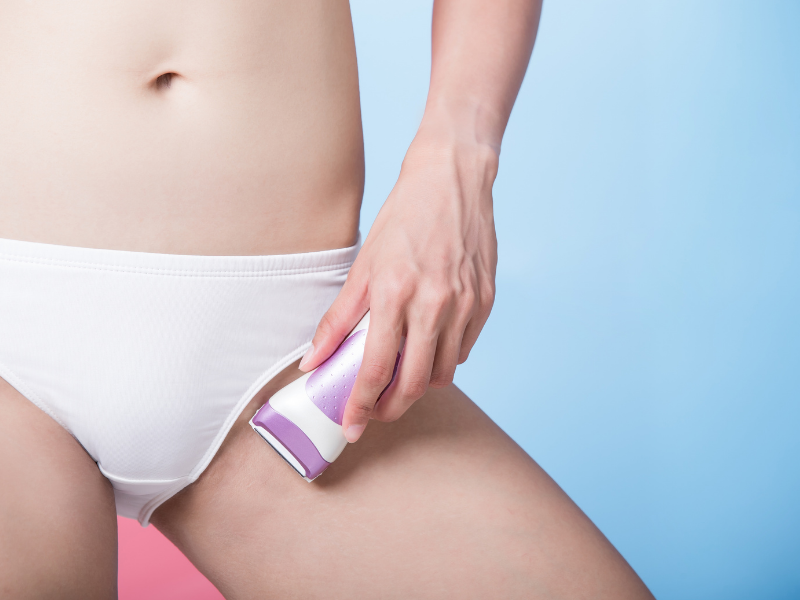
Razor bumps are small, red bumps that can appear after shaving. They’re called “razor bumps” because ingrown hairs from shaving cause them. These bumps develop when hair shafts become trapped beneath the skin’s surface. Ingrown hairs can be painful, itchy, and embarrassing, especially in a sensitive area like your pubic region!
Yes! If you’ve ever shaved or waxed the areas around your genitals, you’re at risk of getting razor bumps. The good news is that if you follow these tips for preventing razor bumps in the future, they’ll be less likely to appear on your body again.
These tips will help keep your skin in good condition and hopefully prevent problems from razor bumps.
If you already notice a red, bumpy rash on your skin, it is too late for prevention. It’s time to focus on treatment.
Make sure to wash the area gently with warm water and soap each day. That will help to cleanse your skin and prevent infection.
Apply a topical cream that soothes razor burn or ingrown hairs, such as aloe vera gel or witch hazel solution.
Apply a warm compress to the affected area for 10 minutes, up to three times per day, to increase blood flow to the area.
If your symptoms don’t go away or become worse, talk to a doctor about other treatments or prescription medications.
If you get razor bumps, treat them right away and take steps to prevent them from coming back.
Razor bumps are no fun, but they’re also nothing to be embarrassed about. Lots of people get them, and you can take steps to prevent them and treat them. Now that you know how razor bumps form and some tips for getting rid of them, give the methods we covered a try!
If you try to relieve razor bumps on your own, but they won’t go away, it’s time to talk to a medical professional.
If razor bumps have you bothered and you want to talk to an online doctor, Razor Bumps, Inc.’s board-certified physicians are available now through easy virtual video visits. Find out more by chatting with us now.
Disclaimer: The contents of this article are for informational purposes only and do not constitute medical advice. The information, graphics, and images on this site are not intended to substitute diagnosis or treatment by a medical professional. Always seek the advice of a licensed physician for any questions you may have regarding a specific condition.
Razor bumps can be a bother. When they show up, you want them gone fast.
Also known as pseudofolliculitis barbae, razor bumps are small red bumps that can occur after shaving. They make your skin look bumpy and feel irritated. When left alone to heal and given proper skincare, razor bumps typically last for about 2-3 weeks. However, severe cases can go on for months.
Razor bumps are a common problem for men who shave their faces regularly, but they can affect women too. In this article, we’ll take a look at what razor bumps are, how to get rid of them, how long they last, and most importantly: how to prevent them from popping up in the first place. Read on to learn more!
After shaving, you may have seen these bumps on your face or neck and wondered how long they’d last. Razor bumps can be frustrating. These ingrown hairs can range from mildly irritating to extremely painful and unsightly.
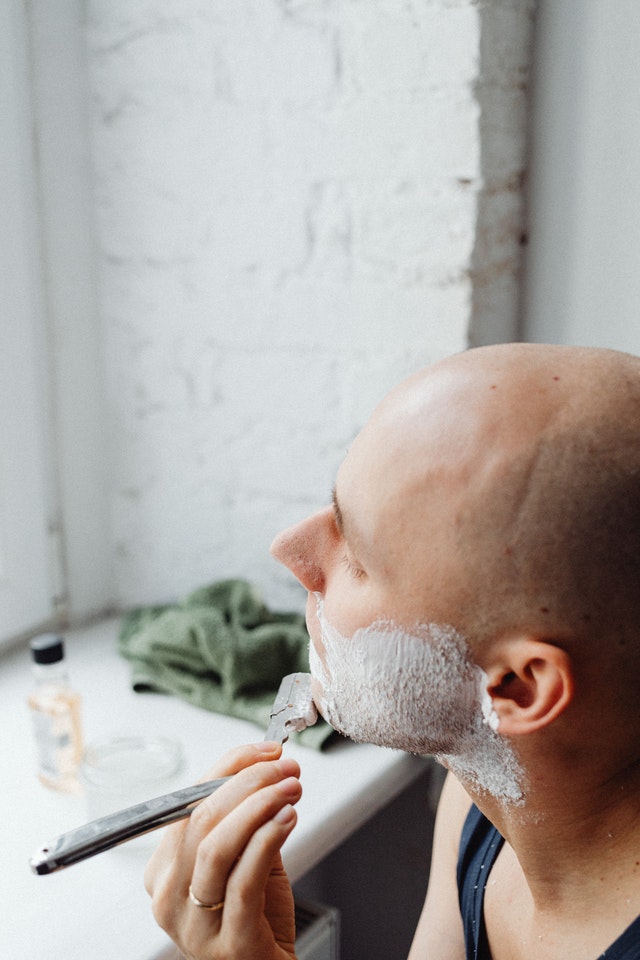
Razor bumps are caused by ingrown hairs (also called pseudofolliculitis barbae), which develop when hair shaves off unevenly and curls back into the skin instead of growing out the way it should. Mild cases of razor bumps will resolve in one to two weeks. Unfortunately, more severe cases may take much longer to heal. Sometimes, razor bumps cause permanent scarring that does not go away. The resulting irritation looks like small pimples that don’t go away with time or regular cleaning.
Luckily there are steps you can take to reduce razor bumps.
If you want to prevent razor bumps, here’s what you need to know:
Folliculitis is a skin condition resulting from ingrown hairs. It’s caused by shaving, which damages your hair follicles, making it easier for bacteria to grow inside them and cause inflammation.
Ingrown hairs are common in the armpits, groin area and face due to these areas being shaved most often. The inflammation and redness present on the skin may last for up to two weeks until the hair falls out or grows back in its natural direction, which will leave you feeling smooth again!
Common causes of razor bumps include shaving too close to the skin and using blades that cut too closely. Razor bumps can also result from shaving in the direction the hair grows. Shaving in this way leaves behind tiny hairs, which then become ingrown hairs when you attempt to push them back out through subsequent shaves. To avoid this, try shaving in the opposite direction of your hair growth (against it).
When it comes to how long razor bumps last and how they’re treated, there are a few factors at play:
If you take care of your skin and protect it from further injury, razor bumps will heal in 2-3 weeks.
You can prevent razor bumps by selecting the right razor and using proper shaving techniques.
The best method is shaving in the direction of hair growth. Avoid using dull razor blades with too much pressure or shaving in one direction without changing your angle after every stroke.
You should also leave your hair alone for long periods to avoid irritation. Trimming or shaving only when necessary will also help reduce irritation by preventing overgrowth of ingrown hairs and keeping the area from becoming irritated from constant grooming.
As you can see, there are many ways to prevent razor bumps from happening. If you follow these tips and strategies, you will be able to avoid razor bumps with ease.
It is important to note that every person’s skin is different, and what works for one may not work for another. You should try out different methods to find one that works best with your skin type and hair texture.
The best treatment for razor bumps is exfoliation and pushing hairs out of the skin through trimming or shaving only when necessary.
Exfoliating your skin will help remove dead skin cells that can irritate and reduce ingrown hairs.
Try using an over-the-counter exfoliant cream for sensitive skin.
If razor bumps persist, you need to talk to a doctor about your skin condition.
You can avoid razor bumps if you’re conscious of how you shave.
Hopefully, you better understand razor bumps and what to do about them. To keep razor bumps from sticking around for two to three weeks, you should try to prevent them altogether. Be sure to follow these simple steps for a safe shave.
Disclaimer: The contents of this article are for informational purposes only and do not constitute medical advice. The information, graphics, and images on this site are not intended to substitute diagnosis or treatment by a medical professional. Always seek the advice of a licensed physician for any questions you may have regarding a specific condition.
Barbershops are a place for men to sit back and relax. They are also a place for gentlemen to discuss sports, politics, and current events. Going to the barbershop is an experience more than an errand for a haircut or beard trim. Barbers are valued for their skill and expertise in cutting men’s hair. So, can they treat skin conditions caused by shaving?
In general, barbershops do not perform any treatment for skin conditions resulting from shaving. For their safety and the well-being of their customers, barbers cannot work with any open wounds or skin that appears infected. Men with razor bumps should not go to the barbershop for treatment but rather seek medical advice from a licensed physician.
Men who suspect they might have razor bumps can try at-home remedies to ease skin irritation or find a doctor to help. To find out more, read on.
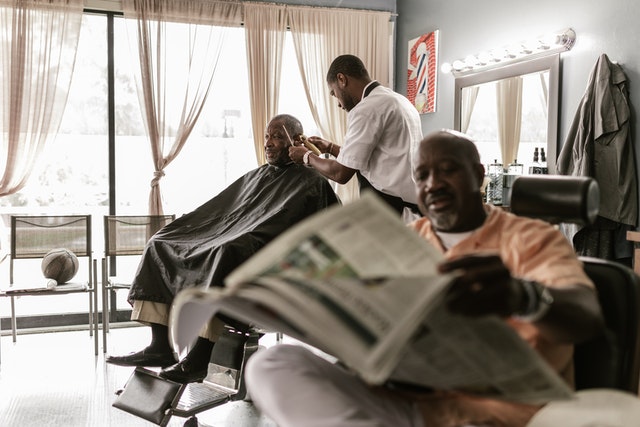
When a customer goes to the barbershop for a shave or trim, the barber will likely ask the client if there are any sensitivities or skin conditions A barber can refuse to shave or cut a person’s hair in some cases. They could turn the client away if the skin shows signs of the following:
Barbers are not licensed to treat skin conditions and are careful not to cause injury. Public health and safety are primary concerns for barbers.
If a man has mild razor bumps on the head or neck, a barber may agree to proceed with the service. Many barbershops apply towels to the face or neck. Warm towels before shaving increase blood circulation to the skin and can soothe irritation. Cool towels after shaving constrict pores and provide a cooling sensation. While both treatments are beneficial for the skin, they are not intended to heal razor bumps.
Men with razor bumps can try at-home remedies to alleviate discomfort and swelling.
Here are some over-the-counter products to try.
Another great do-it-yourself remedy for facial razor bumps is steam treatments. Warm steam on the skin causes pores to open, releasing dead skin cells, dirt, and other debris. Trapped particles in the skin cause pimples and ingrown hairs. In addition, an all-natural steam treatment improves blood flow to the skin, which can help heal compromised skin. Here are steps to try an at-home steam facial.
Consider adding herbs, tea, or essential oils to the boiling water to pamper your skin.
A word of warning, steaming is not recommended for some. Individuals with eczema, for example, can cause skin irritation. If you are unsure if a steam facial is safe for you, ask a doctor.
Individuals can also make an appointment with a doctor’s office or a dermatologist if they have questions about razor bumps.
Thanks to telemedicine, the easiest and fastest way to talk with a doctor about razor bumps is to book an appointment with a virtual physician. Services like Razor Bumps, Inc offer inexpensive, convenient appointments for skin problems for patients who do not have a doctor or cannot get in to see their regular doctor.
Summary
In short, men with razor bumps can try to alleviate skin irritation from razor bumps or find a doctor to help. While barbers are highly skilled at their craft, they are not qualified to treat any skin condition. Razor bump treatment is best left to the professionals.
If you have questions for the Razor Bumps, Inc physicians, don’t wait! Contact us now.
“Code of Ethics”. americanbarber.org. Accessed April 14, 2022.
“Is Steaming Your Face Good for Your Skin?”. health.clevelandclinic.org. Accessed April 14, 2022.
Disclaimer: The contents of this article are for informational purposes only and do not constitute medical advice. The information, graphics, and images on this site are not intended to substitute diagnosis or treatment by a medical professional. Always seek the advice of a licensed physician for any questions you may have regarding a specific condition.
Unfortunately, many men experience unsightly bumps on their necks after shaving. And not only are they unattractive. They are itchy, painful, and often sensitive! If you struggle with this uncomfortable problem, there is good news. Here's how you can get rid of razor bumps on the neck.
To get rid of razor bumps on the neck, men can use topical washes or creams to reduce inflammation. Those who suffer from razor bumps, also called barber bumps, can speed healing by letting neck and facial hair grow naturally.
If you’re wondering about how to use over-the-counter remedies to get rid of razor bumps on the neck, read on.
The best solution for razor bumps on the neck is to stop shaving. Shaving leaves behind hairs with sharp tips just under the skin’s surface. As hairs regrow, they can turn and grow into the skin. That results in razor bumps on the neck.
Razor bumps on the neck appear as raised pimple-like cysts on the skin’s surface. Typically, this happens 2-3 days after shaving the face, chin, or neck. So, what can be done about these bothersome bumps?
Here are some solutions for razor bumps on the neck.
Fortunately, men find products formulated for razor bumps at pharmacies, drug stores, or online retailers. When looking for a cream, lotion, or gel to treat razor bumps, watch for a solution to reduce inflammation, swelling, and discoloration.
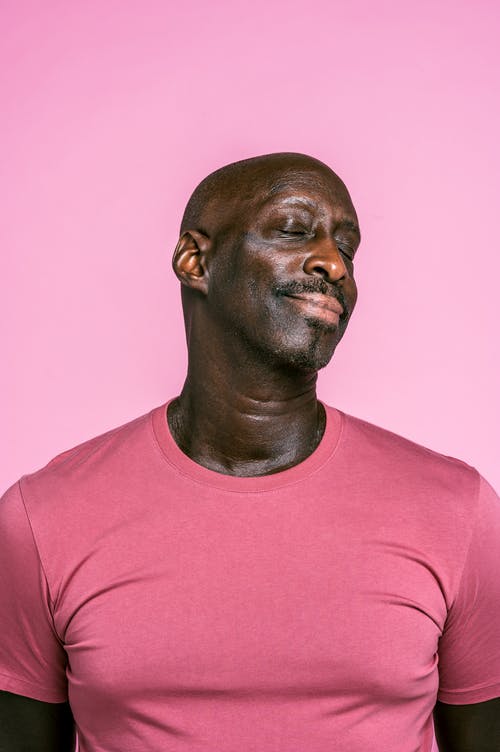
Getting rid of razor bumps on the neck is one issue. But perhaps you grew out your beard to finally get rid of them, and now you’re faced with the need to shave again.
The last thing you want is another case of razor bumps. Here are some tips to stop getting razor bumps on the neck. For men who have to shave for personal or professional reasons, the key is to focus on ways to reduce or prevent razor bumps.
Here are three ways to stop getting razor bumps on the neck.
Dermatologists recommend training unruly hair to grow straight rather than curly. Straightening new hair growth may prevent sharp edges from curling into the skin and causing razor bumps, as hair regrows.
Use a soft bristle brush to train the hair. Stroke the hairs in one direction.
You can find a brush made especially for beards, or use a new soft bristle toothbrush. Consistency is key. Make sure to do this daily to see improvement over time.
Many men use after-shave but are you using a pre-shave? Expert doctors recommend using a pre-shave before shaving cream to help protect skin while making shaving a smoother process. Massaging a pre-shave product into the neck and facial hair makes beard hairs lift to the razor. Look for labels with these ingredients.
An important part of preventing razor bumps on the neck is using the right shaving technique. A dermatologist will tell you to avoid shaving against the grain. That is because this method will reduce the risk of razor bumps. On the neck, this can be hard. Usually, hair on the neck grows in multiple different directions. Use a mirror to examine the direction of hair growth before you take a razor to it. After you find how your facial hairs are growing, glide the razor along that direction next time you shave, and you should see a difference.
In short, you don’t have to suffer from razor bumps on your neck after every shave. Now you know what at-home solutions you can try to get rid of them quickly. Using these tips for shaving and skincare, you can battle these bumps.
For skin conditions that don’t resolve on their own or get worse, you can talk to an expert at Razor Bumps, Inc.
Disclaimer: The contents of this article are for informational purposes only and do not constitute medical advice. The information, graphics, and images on this site are not intended to substitute diagnosis or treatment by a medical professional. Always seek the advice of a licensed physician for any questions you may have regarding a specific condition.
Razor bumps are uncomfortable. If you have this unfortunate skin rash from shaving, you probably wonder how long razor bumps last.
It is tough to say how long razor bumps last because each case is different. In general, a true case of razor bumps, also called Pseudofolliculitis Barbae (PFB), can last one month or more. Factors such as how the skin is cared for and what products are applied can affect the healing time for razor bumps.
If you’re wondering why skincare matters when it comes to healing razor bumps, and what you can do to get the problem to go away faster, you are not alone. Read on to learn more.
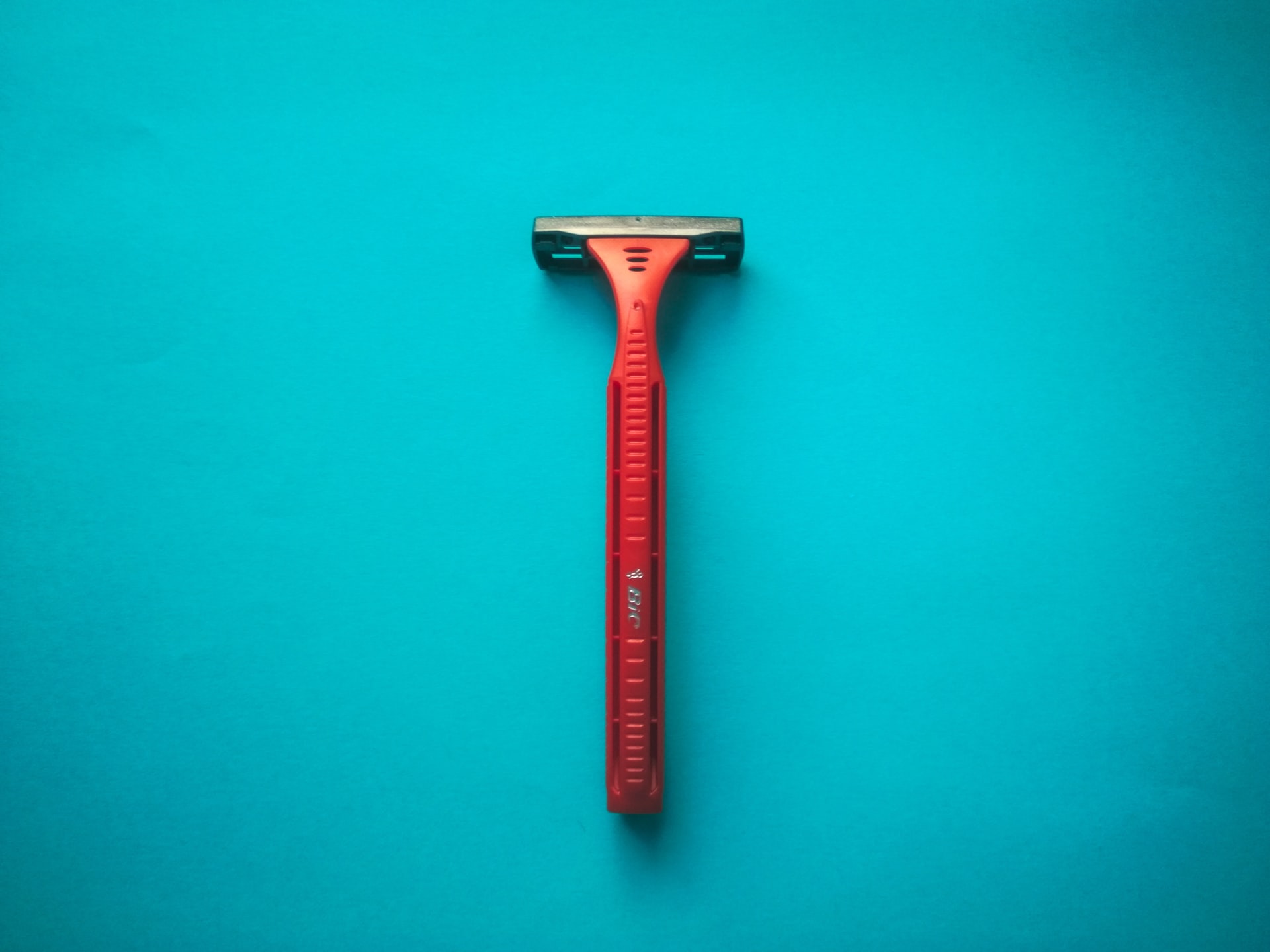
Razor bumps, or PFB, are caused by the natural process of hair growth when it is interrupted by shaving for hair removal. Most commonly PFB occurs on the face and neck but can affect other parts of the body, such as the underarms or thighs. To understand how long razor bumps last, let’s look at how razor bumps begin. It all starts with hair growth.
Hair growth begins with the anagen phase. That is the “growing” phase. During this time, a matrix of cells rapidly multiplies under the skin. This process pushes the older cells of the hair strand out from the skin’s surface. According to the American Academy of Family Physicians, 85 to 90 percent of hairs are in this anagen phase. The remaining hairs are in stages of rest when hair eventually dies or falls out. Hair growth is what causes razor bumps to appear in the first place.
After shaving, facial hair begins to regrow. Sometimes, hairs can curl and regrow in the wrong direction. According to the American Osteopathic College of Dermatology, when body hair, such as a beard, curves and tries to grow back into the skin, the body responds with inflammation and a foreign body reaction. Swollen, reddened, painful bumps appear on the skin as the hair grows. As you can see from the chart, it may take a few days for razor bumps to show up after shaving.
Post-shave razor bumps can also appear as:
These bumps may also bleed easily and can become infected. In some cases, you might see hairs trapped under the skin’s surface. These are called ingrown hairs. These signs indicate a case of razor bumps that will go on if the is responding to the trauma.
Studies show that razor bumps usually go away on their own when you stop shaving.
Hair growth patterns vary depending on a person’s age, sex, and genetics. The average man’s beard grows about 0.27 mm every 24 hours. Consider this timeline.
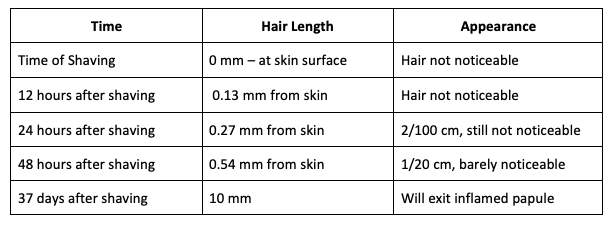
If left to grow to a length of approximately 10 mm, the entrapped hair will exit the inflamed pocket. In other words, the hair will work its way out of the skin. This growth typically takes approximately five weeks, or 37 days, when growing at 0.27 mm per 24 hours.
Another option is to remove ingrown hairs mechanically. For example, tweezing is one method to remove hairs that have grown back into the skin.
On the other hand, if shaving continues, skin damage can worsen. So will the case of razor bumps. In this case, the skin will continue to respond with inflammation. Signs and symptoms will worsen. Over time, a prolonged inflammatory response can cause a condition known as post-inflammatory hyperpigmentation. It is a type of skin discoloration that is worse in darker skin types. PFB can also lead to permanent scarring. If you have hyperpigmentation, a doctor can recommend over the counter treatments to lessen the appearance of dark spots.
If you have razor bumps, you don’t have to wait for them to go away on their own. Most cases of razor bumps will improve faster with a few simple steps you can take at home. The keys to speed healing are to lower inflammation and to prevent infection. Here are a few steps that can do just that.
1. Wash your clothing thoroughly. That means cloth masks over the face or clothing worn over other body parts. Clothes collect dead skin cells and bacteria that could cause inflammation or infection if worn over skin affected by razor bumps.
2. Cleanse the area with gentle antibacterial soap. Avoid reusing washcloths or using body poufs. Using a clean cloth each time will prevent bacteria from irritating skin more.
3. After cleaning the skin, apply a moisturizer to the area. Lotions and creams with salicylic acid can also help symptoms.
4. Consider over-the-counter products to reduce inflammation and prevent infection. Some of these options include antibiotic ointment or hydrocortisone cream. Natural plant-based and herbal remedies such as tea tree oil or witch hazel calm aggravated skin.
5. Avoid further irritation. Avoid shaving the area again until the bumps go away. When razor bumps are in the face or neck areas, it might be necessary to grow a beard. While the hair is growing, keep the hair clean to prevent skin infection.
You should see a medical professional when razor bumps don’t go away. If you try these steps to soothe the skin, but your signs and symptoms become worse, a doctor should evaluate your razor bumps.
If you stop shaving, but the bumps do not resolve in 4-5 weeks, a healthcare provider should evaluate the skin condition. Some cases might require medication, prescription cleansers, special creams, or other treatments.
While it’s true that severe cases of razor bumps can cause permanent skin damage, don’t jump to that conclusion right away if you are worried about stubborn bumps that just don’t go away, make an appointment to talk with a healthcare provider.
Now that you know how long razor bumps last and what causes them use these tips to get rid of bumps faster. And when home care doesn’t work, talk to your doctor.
Disclaimer: The contents of this article are for informational purposes only and do not constitute medical advice. The information, graphics, and images on this site are not intended to substitute diagnosis or treatment by a medical professional. Always seek the advice of a licensed physician for any questions you may have regarding a specific condition.
Spring break is just around the corner. Soon it will be time to strip off the winter layers and bare your skin to the sun. But for some men and women, shaving the thighs or abdomen brings to mind bothersome razor bumps.
If shaving your bikini line causes skin irritation, you are not alone. Razor bumps are a common condition. The good news is you can take steps this spring to avoid bikini line razor bumps. Here’s how to get a bathing suit ready with the smooth shave you want.
Here are some steps you can take to get a silky bikini shave, without those pesky razor bumps.

First, it is important to understand why razor bumps show up along the bikini line. The hair along the bikini line is usually coarse and curly. This type of hair tends to curve as it grows. After shaving, sharpened hair tips can turn and grow right back into the skin. An ingrown hair, or multiple ingrown hairs, can result within 24-48 hours of shaving. That causes what appears as swollen, sensitive bumps on the bikini line.
Many women notice bumpy areas on their inner thighs and abdomen after shaving. If you've experienced this, here are some tips to up your shaving game to avoid bikini line razor bumps.
After shaving, consider using a topical skin treatment to soothe the skin and reduce irritation. Witch hazel and aloe vera are all-natural, over-the-counter products that are known for being anti-inflammatory and antiseptic. In other words, they calm skin and reduce bacteria. Use a cotton ball to apply these or other products to the affected skin.
“When trauma occurs to your skin, it reacts by becoming inflamed and bumpy,” explains dermatologist Dr. Mona Gohara, MD.
If you already have a case of razor bumps in your bikini area, it’s not too late. Here are some tips for dealing with skin irritation after shaving.
In some cases, razor bumps on the bikini line can become serious. If your razor bumps become worse over time, don’t go away, or are accompanied by other symptoms such as severe pain or are interfering with your daily activities, it might be time to talk to a doctor.
Now you know how to avoid or get rid of those unsightly and uncomfortable bumps from shaving. Even though the bikini line is a high-risk area for razor bumps, you can get the smooth shave you want with a little extra effort. Try these tips at home and be ready for your spring break out.
If razor bumps have you bothered and you want to talk to an online doctor, Razor Bumps, Inc.’s board-certified physicians are available now through easy virtual video visits. Find out more by chatting with us now.
Disclaimer: The contents of this article are for informational purposes only and do not constitute medical advice. The information, graphics, and images on this site are not intended to substitute diagnosis or treatment by a medical professional. Always seek the advice of a licensed physician for any questions you may have regarding a specific condition.
Have you ever noticed a rash on your legs after shaving? If so, it could have been razor bumps. So, what do razor bumps look like on the legs?
Razor bumps on the legs look like small pimples or ingrown hairs. It is important to differentiate between razor bumps and bumps that appear after shaving. Razor bumps is a true medical condition formally known as pseudofolliculitis barbae. Bumps that show up as a rash on the legs after shaving could be something else. What some people refer to as razor bumps, actually aren't.
There are also a few other bumpy skin conditions associated with shaving. Razor bumps are more common in some parts of the body and certain skin types. If you see something that looks like razor bumps, here’s what you need to know.
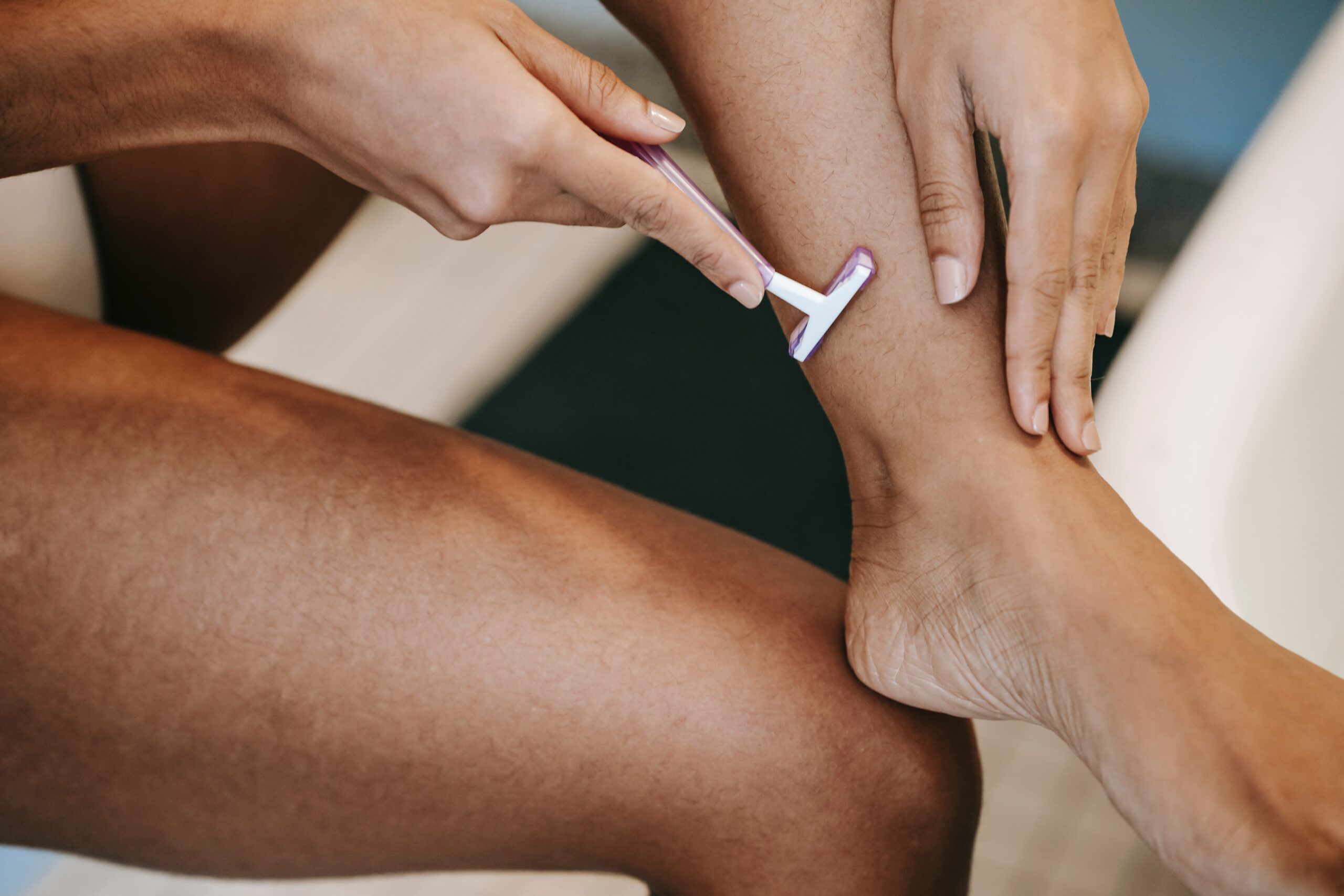
Shaving often irritates the skin. As a result, it can cause problems, such as razor bumps. Razor bumps on the legs might look pink or red. And they are often swollen.
The medical term for razor bumps is pseudofolliculitis barbae. In particular, it is caused by hairs cut by a razor with a pointy or jagged edge, like a tiny knife. Sometimes, these short, coarse, curly hairs curl and grow back into the skin. In other words, razor bumps are a type of ingrown hair. Only a medical professional licensed to diagnose and treat conditions can tell for sure if it's razor bumps.
Razor bumps usually appear 24-48 hours after shaving. The good news is that razor bumps typically do not appear on the legs. Razor bumps usually cause ingrown hairs on the face and neck for two reasons:
An exception, though, is the upper thigh and groin area. This area is more likely to be affected by true razor bumps. That is because hairs in these regions are likely to be thicker and wavy or curly.
Bumps on the legs after shaving that are not located in the thigh or groin area are probably not razor bumps. They could be another skin condition.
Bumps on the lower legs after shaving might be razor burn. Razor burn is another type of rash that looks like small red bumps. But it is not caused by ingrown hairs. So, it usually shows up in only a few hours after shaving.
Razor burn is usually not as serious as razor bumps and resolves on its own quickly. It is caused by skin irritation related to the razor, shaving products, or just the shaving method. While it causes a burning sensation and looks bad, it usually won’t cause any long-term damage.
Another reason you might have bumps on your legs after shaving is an irritation caused by the razor or the shaving cream. Skin sensitivities can show up as a rash. topics/sensitive-skin" rel="noreferrer noopener">Itching is a good sign that someone might have skin sensitivity.
Folliculitis is another condition that could cause bumps on the legs after shaving. A hair follicle is a pocket in the skin where the hair root grows. Folliculitis is an inflamed, irritated, or infected hair follicle.
Sometimes the skin pocket or hair follicle is injured through shaving. When bacteria enter the hair follicle, it can cause infection.
Folliculitis, skin sensitivities, and razor burn are three conditions that might look like razor bumps. People often refer to them as razor bumps because they cause spots on the skin, usually after shaving. But each condition has a different cause, so they are treated differently.
So how can you tell what the rash on your leg is?
These are four skin problems that commonly appear on the legs. If you noticed bumps from shaving on your legs and are unsure if you have razor bumps or something else, talk to a doctor about it. A virtual physician can look at your skin through a secure video visit and make recommendations to help you treat the problem. They can help you clear up your skin in no time, and you can say goodbye to unattractive bumps on your legs.
Have you experienced problems from shaving for your job? If razor bumps have you worried, you need to talk to one of our doctors. Meet a top board-certified physician online through a convenient virtual video visit. Find out more by chatting with us now.
Disclaimer: The contents of this article are for informational purposes only and do not constitute medical advice. The information, graphics, and images on this site are not intended to substitute diagnosis or treatment by a medical professional. Always seek the advice of a licensed physician for any questions you may have regarding a specific condition.